Australia So Much to See

The Merredin Railway Museum also encompasses a general history museum.
A few items of interest were
Salvatore Crimi-Gialuisi (1917 - 1983) arrived in Western Australiain 1952 and worked as a woodcutter for the number four pumping
station at Merredin.
He went back to Sicily and eighteen months later returned with his 16 year old twins, Guiseppe and
Vincenzina. They worked around Merredin as woodcutters, again for the number four pumping station, while living in a tent.
After
a few years he was able to bring the rest of his family from Italy to Merredin.
This woodcutting saw is the original used for
the felling of forest the run the water pump at the pumping station. The saw runs on petrol and is self propelled, with a long
arm and a belt driven large circular blade. Considering its size only one person is needed. The saw was used from sunrise
to sunset, seven days a week.
Various farm equipment is displayed on railway carriages at the Merredin Railway Museum
The green item here is a hand driven grain
pickling machine from the 1920s and 1930s. Treating one bag of grain at a time the chemical seed protection was added and the
hand turning coated the grain which to be stored for seed.
Sunshoe Planter and Fertiliser was another Australian innovation. Built in Australia by Sunshine Harvester Works, this was a
one-horse single row machine for planting cotton seed, peas, maize, beans, and other crop seeds. It has separate seed and fertiliser
hoppers, with the seed hopper having a maximum capacity of two-fifths of a bushel, which is around 14 litres, little more than a standard
bucket. Refilling would have been frequent. Seed plates were provided for different sized seeds, and for spacing of seeds
enabling heavy or light sowing rates.
Amongst many other items from bygone times were these meat safes. With a fine mesh to keep flies and other insects out, they
allowed air to flow through and have a cooling effect when hung up outside in the shade.
35 Bates Street at the corner of Coronation Street, this former store building housed the Karis Medical Group from December 2012 until
their move across the street in August 2017.
28 Bates Street Merredin Fire Station and residence (former) comprising the original 1920 fire station and the 1935 fire station with
semidetached residence. 28 Bates Street has been the location for the Merredin Volunteer Fire Brigade since 1920.
34A and 34B Bates Street, constructed around 1920, operated as two different shops.
36 Bates Street at the corner of Coronation
Street dates back to the 1920s when it was built as an agricultural machinery dealership. The front facade has a plaster decoration
of the sun, the symbol of Sunshine Harvester. Underneath this, is the name Kendallís, perhaps the first owner of the business.
It has housed various shops, and since August 2017, this building has housed the Karis Medical Group.
Opposite, on the
east side of the street is another corner store.
Looking to the west side of Bates Street, the buildings between Mitchell and Coronation Streets are particularly worthy of mention. Then we will look at those on the east side.
The first Post Office service at Merredin was under the control of West Australian Government Railways with the station master also
being the postmaster. In November 1910, George Duggan took over as Postmaster, operating the postal service from his grocery
store in Bates Street.
The present Post Office opened in 1913 at the corner of Barrack and Bates Streets. In 1925, extensions
increased the size of the Post Office by more than 50%, in keeping with the original style with a wider frontage. During World
War Two, the Telephone Line Equipment (telephone exchange.) was constructed in the northwest rear corner of the Post office site. In 1965 more additions were made to the Post Office providing a new porch, a staff tea room, and a larger mail room. The porch was
enclosed to create more public space. The most recent improvements were made in 1995.
Lister House is the only two storey shop in Barrack Street. As one of the tallest buildings in Merredin, the upper floor was used by the Volunteer Air Observers Corp during WW2. This upper storey can be seen central in the extract from Museum overhead photo.
Millar's Pharmacy occupied Lister House until the businesses relocated to larger premises in 1995. The street
level of this building is now part of a bedding furniture store, with the upper story having a separate street access it is now
used as a beauty business.
Many of the shops in Merredin date back to the 1920s and 1930s or earlier, particularly those in Barrack and Bates Street.
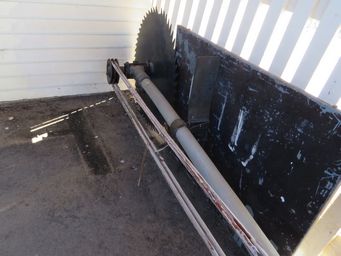
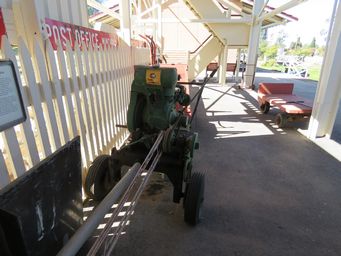
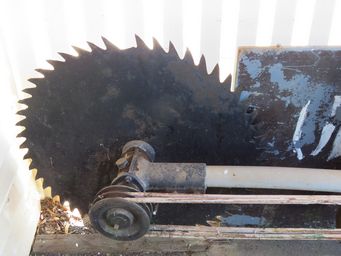
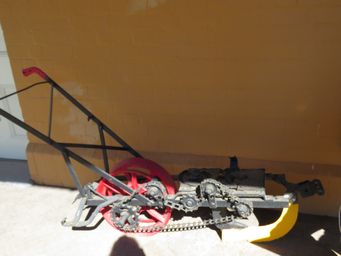
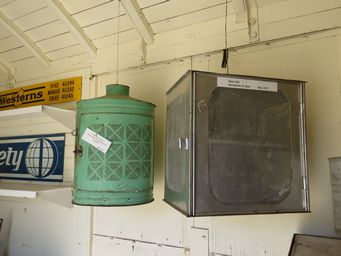
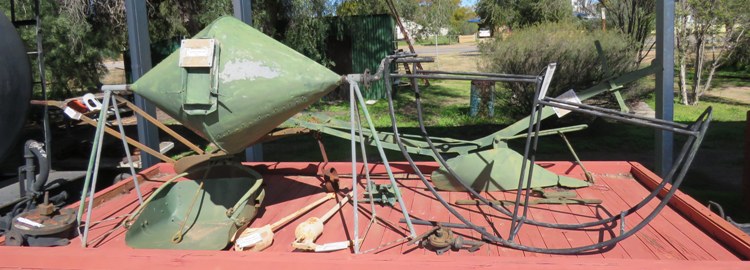
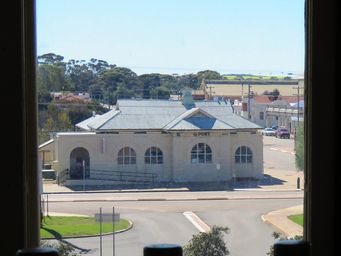
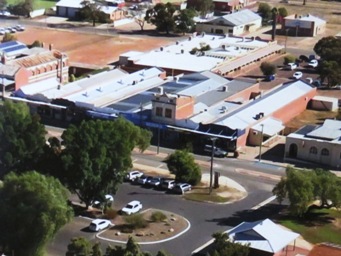
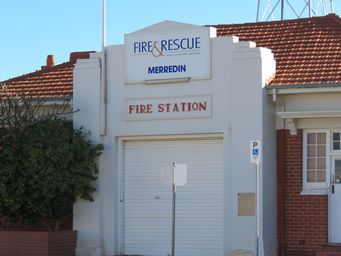
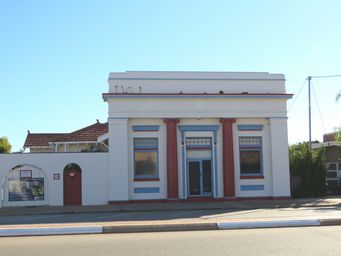
33 Bates Street, next to Cummins Theatre. Agricultural Bank (former), In 1936, to commence a branch in Merredin, the Bank acquired
two brick premises on Bates Street (Lot 95) from stationer Henry Goodhill. They were part of a group of three commercial premises
with common walls.
These premises were believed to have been built in the 1920s. In 1929, the central, and larger, of the three
premises was leased to the Commonwealth Bank for five years. It was this building, and the shop premise on the south side, that the
Agricultural Bank acquired in 1936.
The Agricultural Bank was restructured in 1945 and renamed the Rural & Industries Bank
(R & I Bank). In 1968, new R&I bank premises were built further west on Bates Street, and this building was vacated.
State
Housing Commissionís Merredin Regional Office opened here in 1972.
In 2005, the Department of Conservation and Land Management
occupied this building.
Countrywide Injury Management was a more recent tenant at 33 Bates Street.
Since 2017
Avon Youth, Community and Family Services have occupied this building.